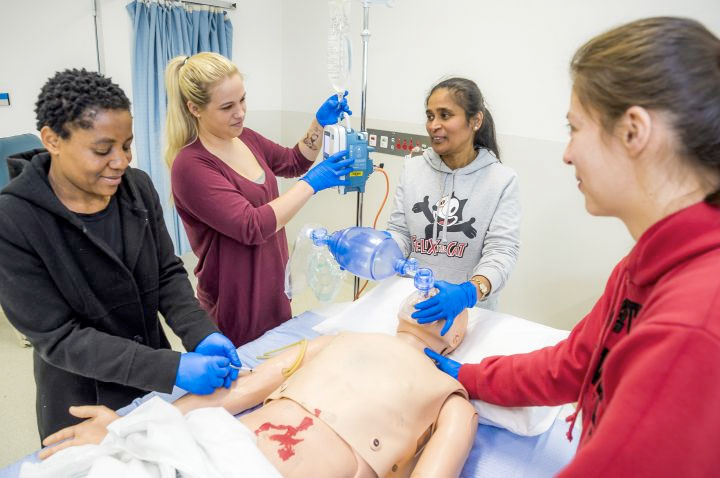By Donna Sardina, RN, MHA, WCC, CWCMS, DWC, OMS
In 2014, more than 8,000 new articles related to wound healing were added to the PubMed online database and hundreds of new patents for topical wound formulations were filed. Staying up-to-date with the latest and greatest findings and products can be challenging. We all lead busy lives, and our demanding work schedules and home responsibilities can thwart our best intentions. Although we know it’s our responsibility to stay abreast of changes in our field, we may feel overwhelmed trying to make that happen.
Keeping clinicians up-to-date on clinical knowledge is one of the main goals of the Wild On Wounds (WOW) conference, held each September in Las Vegas. Each year, I present the opening session of this conference, called “The Buzz Report,” which focuses on the latest-breaking wound care news—what’s new, what’s now, and what’s coming up. I discuss innovative new products, practice guidelines, resources, and tools from the last 12 months in skin, wound, and ostomy management.
This article highlights the hottest topics from my 2014 Buzz Report, with appropriate updates since the September WOW conference.
Pressure ulcer prevention and treatment
2014 was an active year in the area of pressure ulcer prevention. The latest practice guideline on pressure ulcers, released last September, was a joint collaboration of the National Pressure Ulcer Advisory Panel (NPUAP), European Pressure Ulcer Advisory Panel, and Pan Pacific Pressure Injury Alliance. The intent of the guideline, titled “Clinical Practice Guideline for Pressure Ulcer Prevention and Treatment,” was to advance international consensus on pressure ulcer prevention and management. This document is a must-read for all clinicians practicing wound care today.
Also, NPUAP updated its Registered Nurse Competency-Based Curriculum: Pressure Ulcer Prevention. The curriculum now includes major competencies, content objectives, content topics, suggestions for varied teaching methods, and references.
Are some pressure ulcers unavoidable? This continues to be a hot topic. At a February 2014 multidisciplinary conference hosted by NPUAP, participants reached a consensus on these key points:
- Some pressure ulcers are unavoidable.
- Patients at increased risk for developing unavoidable ulcers are those with malnutrition and multiple comorbidities, those with extensive body edema, and those who must keep the head of the bed elevated more than 30 degrees for medical reasons. It’s in every wound clinician’s best interest to stay abreast of NPUAP’s position on unavoidable pressure ulcers. The report was published in the Journal of Wound, Ostomy and Continence Nursing.
Diabetes
According to the 2014 National Diabetes Statistics Report, more than 21 million people in the United States have diabetes, and an estimated 8 million of them are undiagnosed. Diabetes raises the risk of cardiovascular disease because of common concurrent conditions, such as hypertension, obesity, abnormal cholesterol and triglyceride levels, and poorly controlled glucose levels. Help your patients reduce their risk by referring them to the free “Diabetes and Coronary Artery Disease ‘Make the Link’ Toolkit” from the American Diabetes Association.
Compression therapy
Do you use compression therapy to treat patients with venous ulcers? I reviewed three documents on this topic. (See the selected references at the end of this article.) The most compelling was a study published in JAMA Dermatology titled “Delivery of Compression Therapy for Venous Leg Ulcers.” It found more than half the nurses who applied either inelastic or elastic bandages obtained sub-bandage pressures below the 30 mm Hg required for therapeutic compression. The authors concluded that training programs focused on practical bandaging skills are needed to improve management of venous leg ulcers.
Wound care and infection
Infected wounds pose a challenge for even the most seasoned practitioners, who may have difficulty determining the recommended course of action. The Infectious Diseases Society of America published an updated guideline, “Practice Guidelines for the Diagnosis and Management of Skin and Soft Tissue Infections: 2014.” It covers both diagnosis and ongoing management recommendations for a wide variety of infections, ranging from minor to life-threatening. Although practice varies, clinicians should use evidence-based
interventions to identify and manage wound infections; failing to do so could lead to death.
Resources and new products
Need more resources? See Clinician Resources on page 35 for valuable links. Also, check out new products that might be useful for your patients (See New products in wound care.)
The world of wound care is always changing and evolving. We all need to develop a plan for staying current so we’re not using outdated modalities. I’m already gathering the latest and greatest for the 2015 Buzz Report. One thing is certain—there’s never a lack of issues to review when it comes to wound care.
Selected references
Principles of compression in venous disease: a practitioner’s guide to treatment and prevention of venous leg ulcers. Wounds International, 2013. www.woundsinternational.com/pdf/content_10802.pdf. Accessed December 10, 2014.
Zarchi K, Jemec GB. Delivery of compression therapy for venous leg ulcers. JAMA Dermatol. 2014;150(7):730-6.
Zenilman J, Valle MF, Malas MB, et al. Chronic Venous Ulcers: A Comparative Effectiveness Review of Treatment Modalities. Comparative Effectiveness
Review No. 127. Prepared by Johns Hopkins Evidence-Based Practice Center. AHRQ Publication No. 13(14)-EHC121-EF. Rockville, MD: Agency for Healthcare Research & Quality; December 2013. www.effectivehealthcare.ahrq.gov/ehc/products/
367/1736/venous-ulcers-treatment-executive-erratum
-140127.pdf. Accessed December 10, 2014.
Donna Sardina is editor-in-chief of Wound Care Advisor and cofounder of the Wound Care Education Institute in Plainfield, Illinois.
DISCLAIMER: All clinical recommendations are intended to assist with determining the appropriate wound therapy for the patient. Responsibility for final decisions and actions related to care of specific patients shall remain the obligation of the institution, its staff, and the patients’ attending physicians. Nothing in this information shall be deemed to constitute the providing of medical care or the diagnosis of any medical condition. Individuals should contact their healthcare providers for medical-related information.








